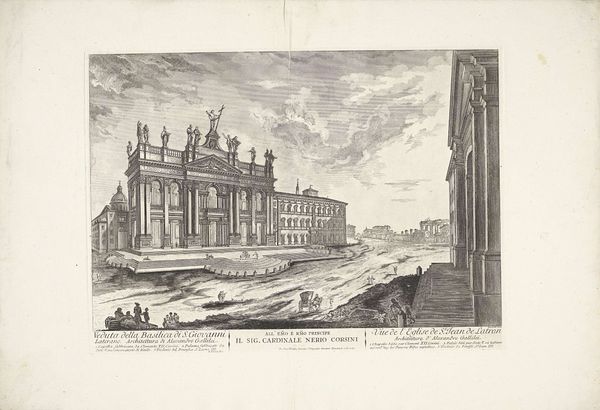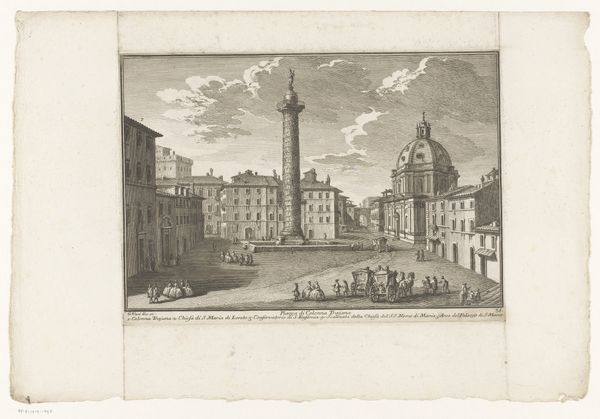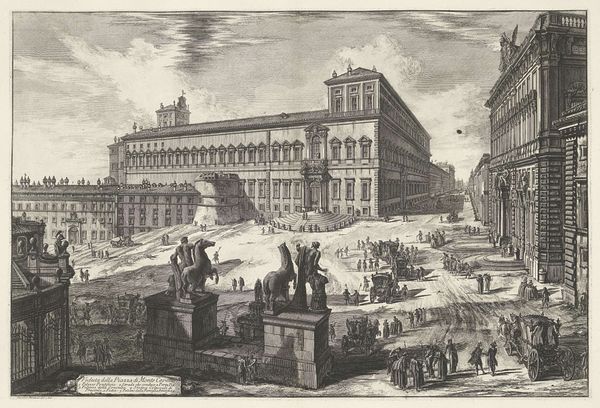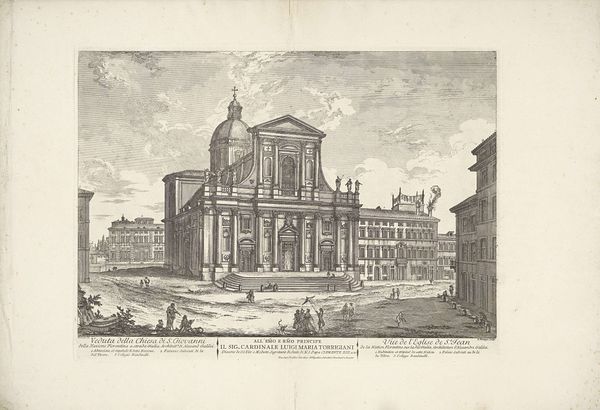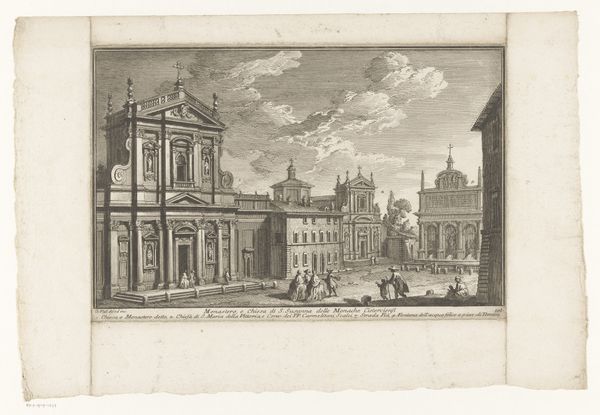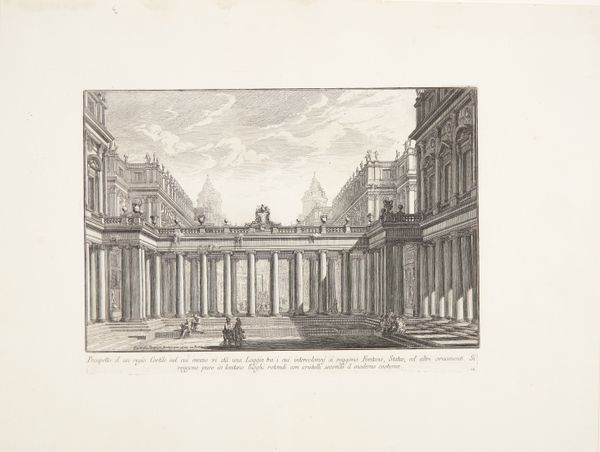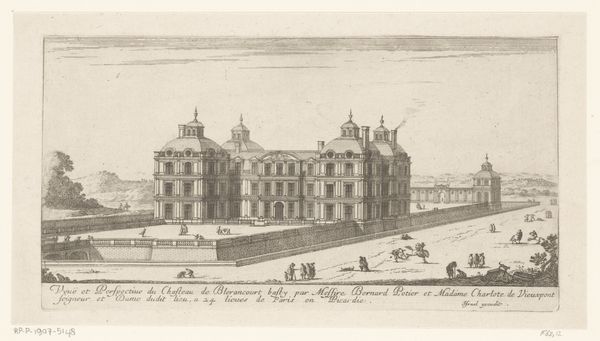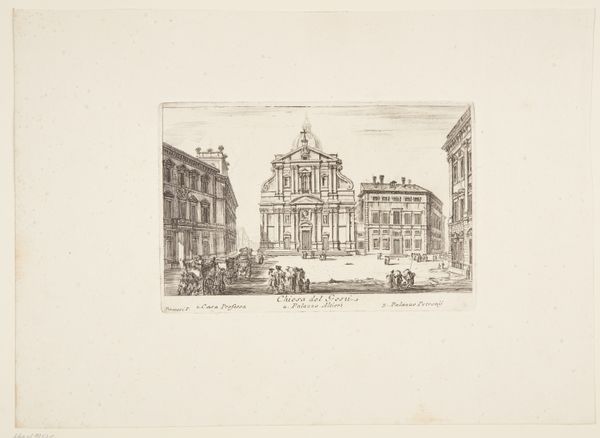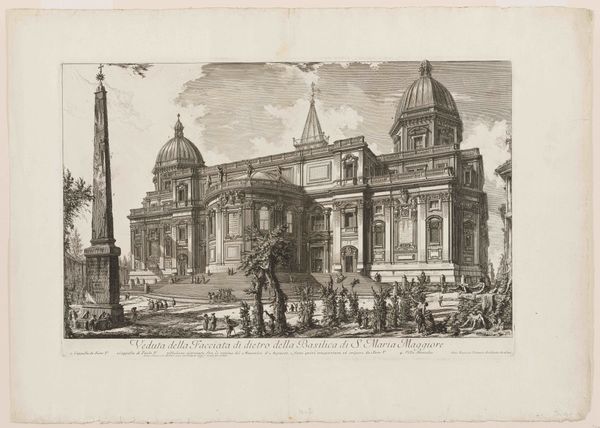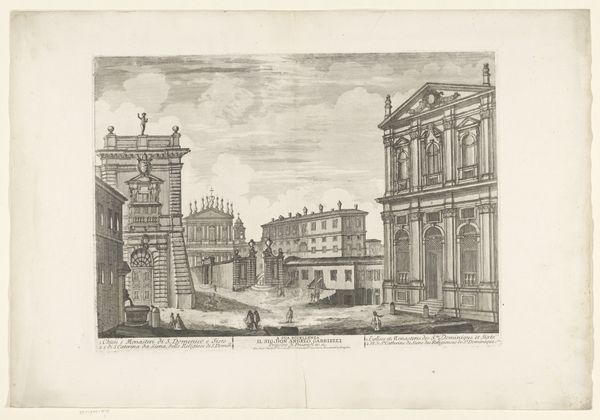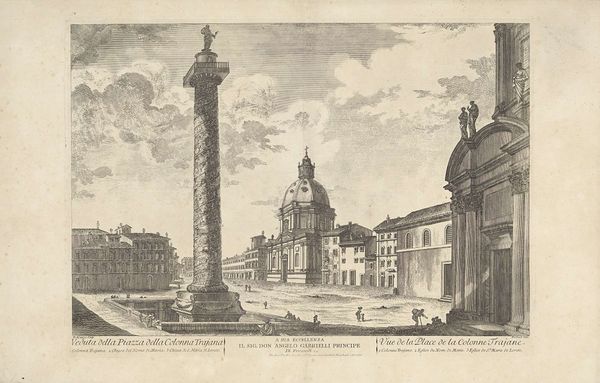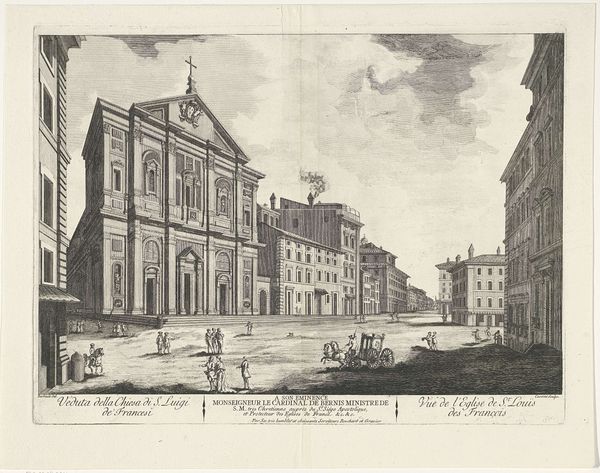
print, etching, architecture
#
neoclacissism
#
pen drawing
# print
#
etching
#
cityscape
#
architecture
Dimensions: height 388 mm, width 530 mm
Copyright: Rijks Museum: Open Domain
Editor: This etching by Domenico Montaigú, made sometime between 1750 and 1799, depicts Santa Maria Maggiore in Rome. I’m struck by how the basilica seems to loom, dominating the foreground activities. How do you interpret the relationship between the architecture and the people in the print? Curator: The basilica, indeed, is not merely a building, but a symbolic representation of enduring power. Note how the artist emphasizes the verticality, the height drawing your eye heavenward. And consider the column to the left – a trophy of faith, relocated from an ancient pagan temple. Editor: So it's like a deliberate statement, incorporating past and present? Curator: Precisely. It's not simply a cityscape; it’s a stage where spiritual narratives unfold. The figures, almost like players, act out their lives against this backdrop. The Church uses Neoclassical design vocabulary to align itself with the authority and order of the Roman Empire. Editor: It's interesting to think about the deliberate way symbols are layered in, one on top of another. What does the light symbolize? Curator: The use of light creates a certain solemnity, a sense of reverence, but perhaps also reveals a distance between the divine and the everyday. Is it welcoming or imposing, in your opinion? Editor: It feels more formal, maybe even a bit imposing. Thinking about the column, how the sacred space claims dominance, really gives me something to consider about the ways images shape cultural memory. Curator: And hopefully sparks a lifelong curiosity in you as well!
Comments
No comments
Be the first to comment and join the conversation on the ultimate creative platform.
